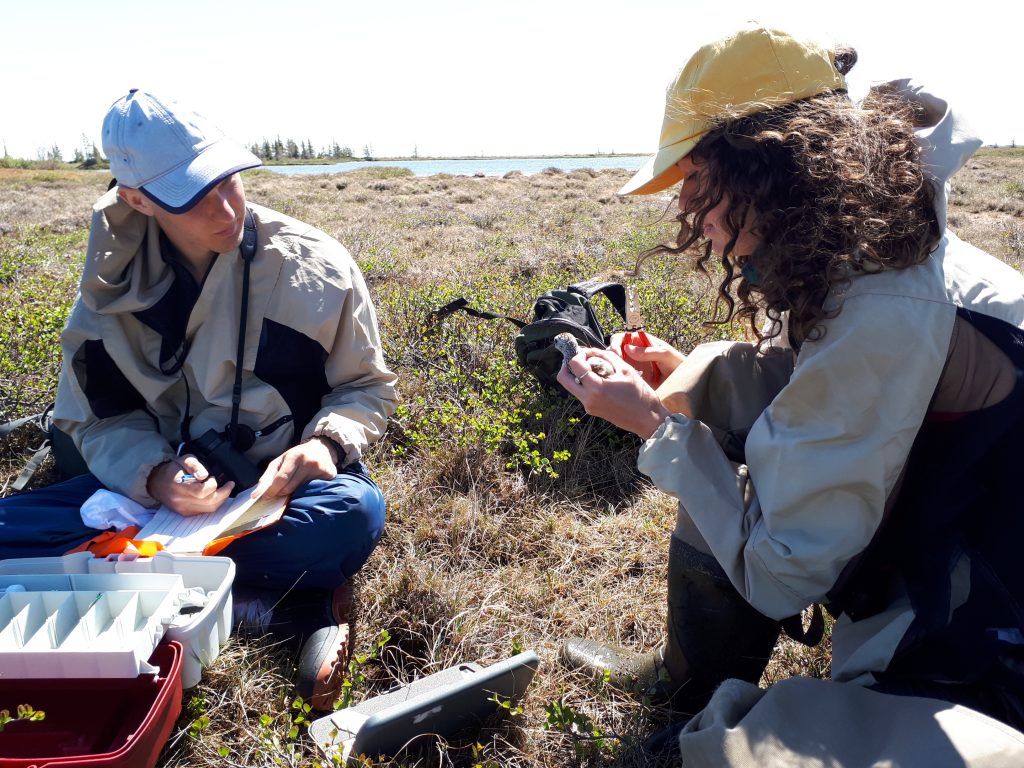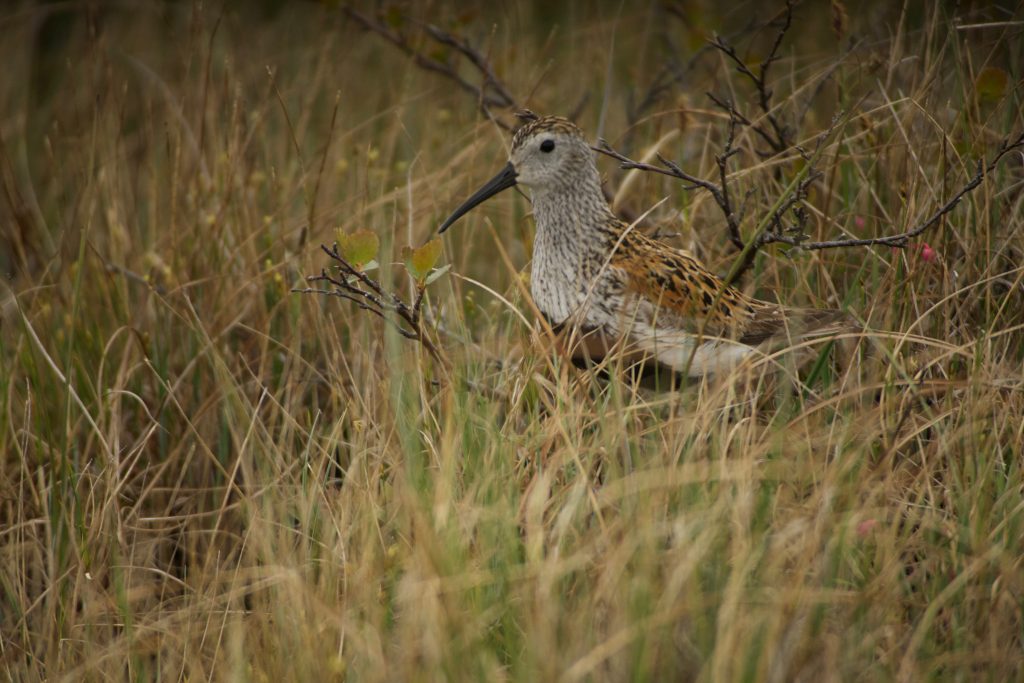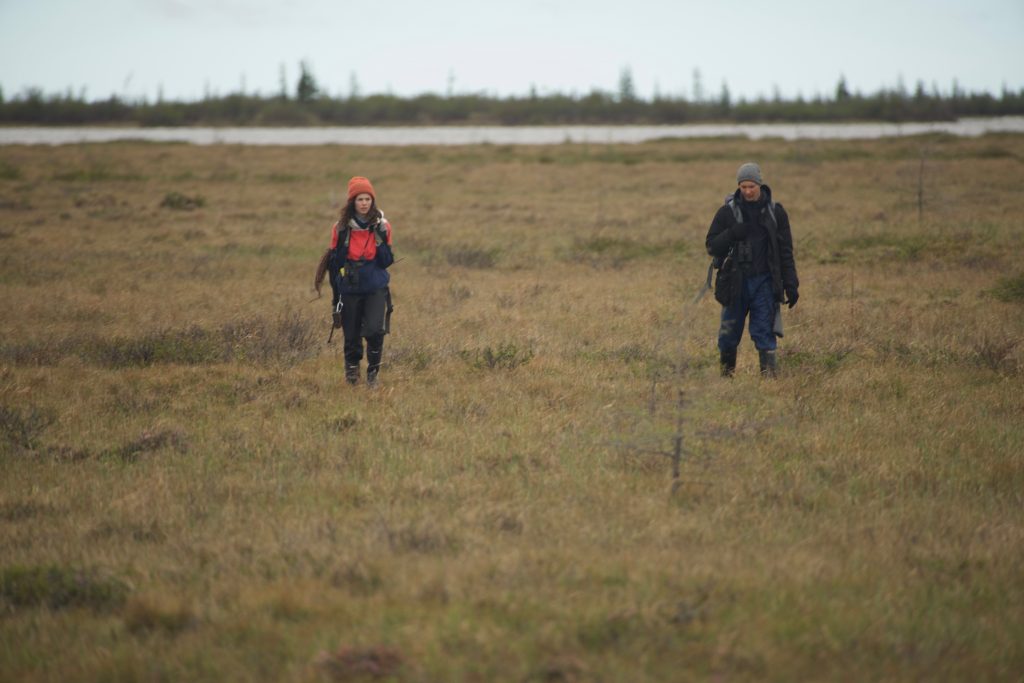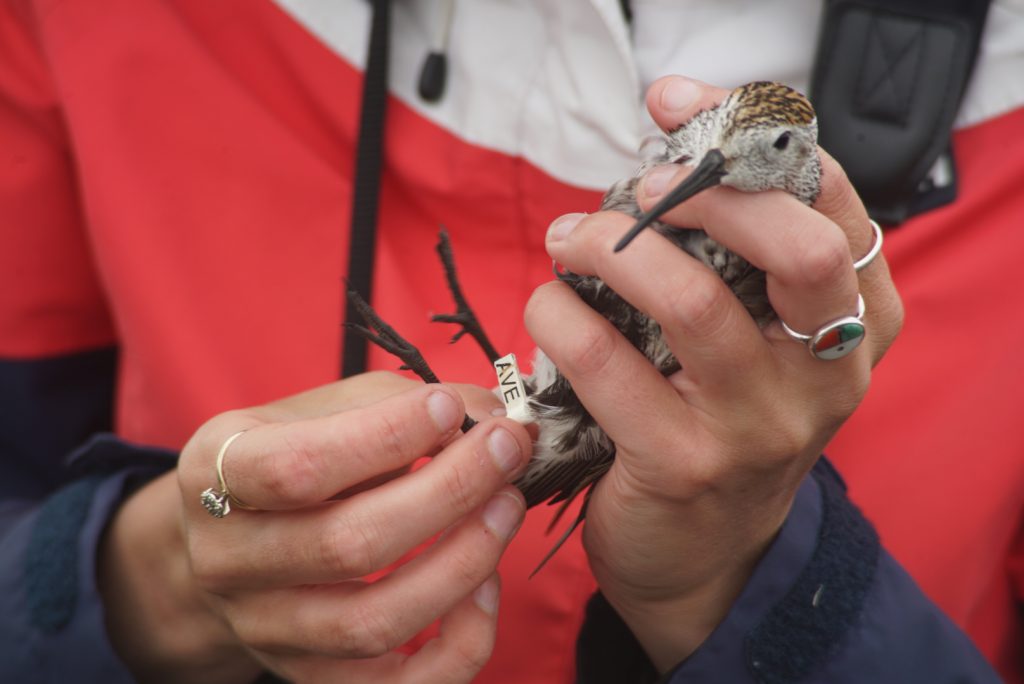Arctic-nesting shorebirds have some of the longest migration distances documented among birds (i.e. 10,000km non-stop flights). They also exhibit great inter and intra-specific diversity in migratory strategies, therefore they provide an excellent study system to document effects of migration on different components of fitness. A major goal of our research is to estimate survival and reproductive success for shorebirds with documented variation in migratory strategies (distance, duration, stopover location, frequency and duration etc.).
With recent advances in wildlife tracking technologies (i.e. radio-transmitters and light-level geolocators), we can now track in greater detail the migration pathways of individual shorebirds with little to no effect on their ecology. Combining these latest advances with state of the art monitoring of reproductive success and survival, my research group will be able to answer questions such as:
Does migration strategy influence reproductive success?
Are migration strategies influenced by ecological conditions at stopover sites and on the nonbreeding grounds?

©Taylor Brown
Standard measurements are taken whenever a bird is captured for banding or recapture purposes; but even more excitingly, this bird was banded in a prior year and came back to the same breeding territory!

© Alexander Zenkovich
Adult Dunlin (let alone their nests) can be extremely difficult to find in the vast grassy fens of the sub-arctic, except for when they announce their presence with their characteristic “frog on a motorcycle” calls.

© Alexander Zenkovich
Searching for shorebirds and their nests in the vast expanses of fen can be long, hard work.

© Alexander Zenkovich
The long days of searching for shorebirds culminate in this rewarding experience: confirming the survival and good health of individual birds who have made two several-thousand-kilometre journeys since you last saw them a year ago!
